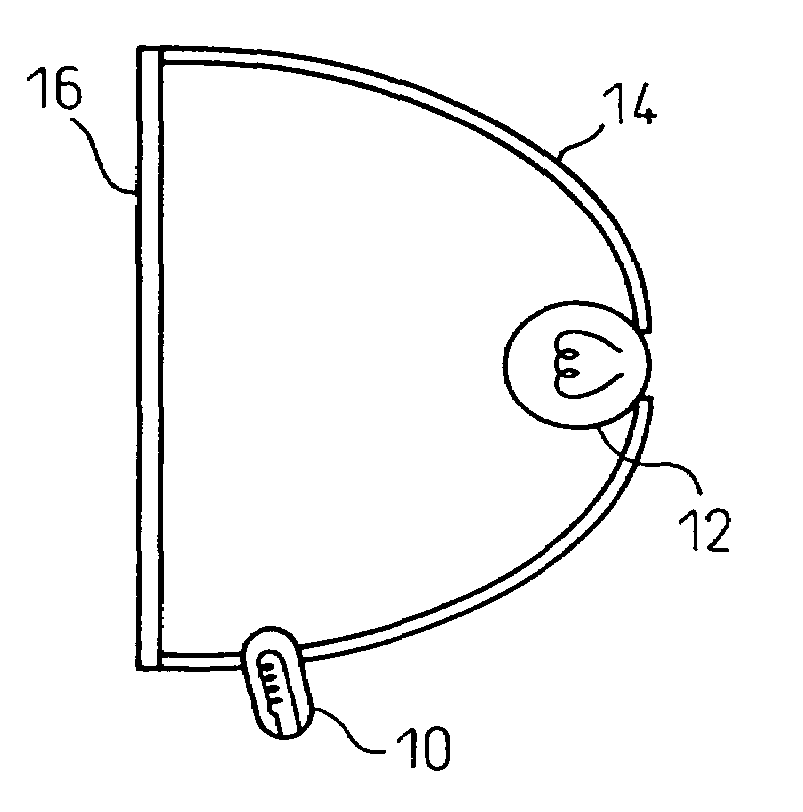Vehicle lamp
a technology for lamps and vehicles, applied in the direction of discharge tubes/lamp details, heater elements, lighting support devices, etc., can solve the problems of low light intensity, dangerous driving conditions, and low light intensity on the lens surface,
- Summary
- Abstract
- Description
- Claims
- Application Information
AI Technical Summary
Benefits of technology
Problems solved by technology
Method used
Image
Examples
example 1
[0021]As a carbon-based heating element having high infrared radiation efficiency, a carbon-based coiled heating element was produced in the following manner: 45 parts of chlorinated polyvinyl chloride resin (T-741 manufactured by Nippon Carbide) and 15 parts of furan resin (HITAFURAN VF-302 manufactured by Hitachi Chemical) were mixed together to prepare a mixed resin system, to which 20 parts of natural graphite fine powder (with an average particle size of 5 μm, manufactured by Nippon Graphite) and 20 parts of boron nitride powder (with an average particle size of 5 μm, manufactured by Shin-Etsu Chemical) were added; then, 20 parts of diallyl phthalate monomer, as a plasticizer, were added, dispersed, and mixed, and the resulting composition was molded by extrusion and carbonized in a nitrogen gas atmosphere. A small lamp heater was fabricated by connecting a lead to an end of the heating element and sealing the heating element within a quartz glass filled with an argon gas. As s...
example 2
[0023]As a carbon-based heating element having high infrared radiation efficiency, a carbon-based coiled heating element was produced in the following manner: 45 parts of chlorinated polyvinyl chloride resin (T-741 manufactured by Nippon Carbide) and 15 parts of furan resin (HITAFURAN VF-302 manufactured by Hitachi Chemical) were mixed together to prepare a mixed resin system, to which 20 parts of natural graphite fine powder (with an average particle size of 5 μm, manufactured by Nippon Graphite) were added; then, 20 parts of diallyl phthalate monomer, as a plasticizer, were added, dispersed, and mixed, and the resulting composition was molded by extrusion and carbonized in a nitrogen gas atmosphere. A lamp heater consisting of an annular carbon-based heating element was fabricated by connecting a lead to an end of the heating element and sealing the heating element within an annular quartz glass having substantially the same shape as the peripheral shape of a lens 16. A vehicle la...
PUM
 Login to View More
Login to View More Abstract
Description
Claims
Application Information
 Login to View More
Login to View More - R&D
- Intellectual Property
- Life Sciences
- Materials
- Tech Scout
- Unparalleled Data Quality
- Higher Quality Content
- 60% Fewer Hallucinations
Browse by: Latest US Patents, China's latest patents, Technical Efficacy Thesaurus, Application Domain, Technology Topic, Popular Technical Reports.
© 2025 PatSnap. All rights reserved.Legal|Privacy policy|Modern Slavery Act Transparency Statement|Sitemap|About US| Contact US: help@patsnap.com


